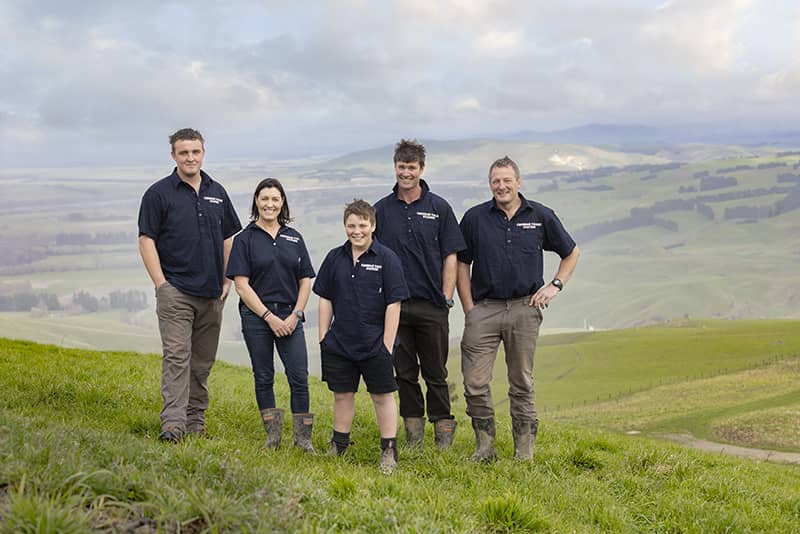Part of an inclusive community of North Canterbury farms that provide mutual support and share pooled knowledge, the sheep and cattle station uses the latest AI technology to maximise its sustainability, and is also a proud provider of meat to the Silver Fern Farms Net Carbon Zero by Nature Beef and Lamb range.
Cheddar Valley Station’s steep, rolling hills, high tussock lands, native forests, and undulating paddocks lie just north of the township of Waiau in North Canterbury. This enterprising farm is made up of a unique spectrum of topography. With varied terrain and pockets of forest, it’s the perfect environment in which to produce Silver Fern Farms’ newly launched Net Carbon Zero by Nature beef and lamb range. Wholly owned by the McDonald family, the 2,300-hectare sheep and beef farm is run by husband-and-wife team Tracey and Jason and farmworker Dan who’s been an integral part of the team for nine years.
The farm has a homely, family feel and there’s never a shortage of humour or banter. Everyone works incredibly hard but no-one takes themselves too seriously. There’s a balance of fun to be had whilst continuously keeping an eye out for innovative ways to improve and enhance the quality and usage of their farmland. The steepness of the terrain gets a few raised eyebrows, with regards to how easy it is to farm. As Tracey says, “You can’t put a tractor on it!” But these are experienced farmers who take it all in their stride: “It just changes how you farm it,” she adds.
The McDonalds have four children; the eldest Baylea, works on a farm in Winton, Jed works on a farm down the road, Sophie is in her final year of school, while the youngest, Archie is at high school.
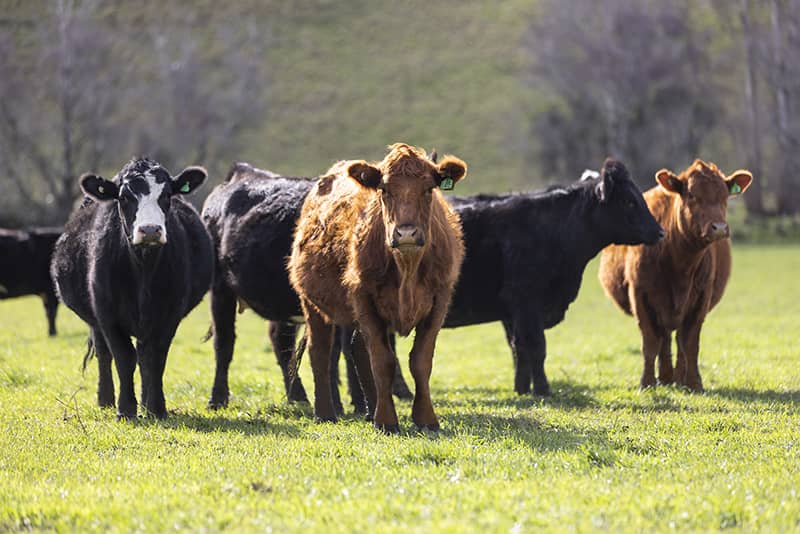
Family farming heritage
Farming heritage goes back generations on both sides. Jason’s family hails from Queenstown; his grandfather farmed at Ben Lomond where his father and siblings all grew up. Tracey’s father was Southland-based, working with deer, doing live venison recovery work: “‘A real southern man, extremely hard working, lots of choppers and crazy stuff,” says Jason.
The McDonalds have farmed here for 19 years. Prior to settling in North Canterbury, they farmed “Acton Meadows” in Five Rivers, Southland. In 2004, the McDonalds purchased Cheddar Valley Station as part of a group of shareholders made up of scientists, bankers, consultants, and other farmers.The farm was run as part of a company that ran and leased four other farms, it was then run as part of a corporate farming business and governed by a board of directors. In 2021, the couple bought Cheddar Valley Station outright, and their commitment remains steadfast: to grow healthy animals, produce high-quality meat and wool, improve biodiversity and conserve the land while finding ways to improve productivity.
“We’re always thinking of things we could be doing to make the land better,” Tracey says. “It’s funny, when we talk about biodiversity, for us it’s about managing the threats such as pests and weeds to protect what we’ve got. We want to enhance our existing biodiversity assets.” Creating an environmentally sustainable farm to pass on to future generations is their long-term plan.
The farm runs sheep and cattle at a very low stocking rate, which means the animals benefit from plenty of space and pasture. The sheep flock is the ‘Snowline’ breed and Cheddar Valley has the stud ewes for this breed. The ram lambs from the stud sheep are sold to another farm in December to be grown out for sale. The Snowline breed prides itself on being a true dual-purpose sheep, with focus on fertility, growth, low micron crossbred wool, low maintenance, no shepherding at lambing, and accurate recording with the use of DNA sampling. Through their genetic programme, the McDonalds provide honourable genetics to farms through New Zealand, improving the quality, profitability and efficiency of the sheep industry.
Cheddar carries 230 mixed aged cows and 50 heifers.The cattle are Red Composites and Black Angus, and the plan for the future is to move towards farming more Black Angus. The beef calves are sold into the store market in April and are placed by Silver Fern Farms. The sheep to cattle ratio is 65:35 in favour of sheep.
On Cheddar Valley, weed and pest eradication is an ongoing challenge. The steep terrain adds an extra dimension of difficulty to keeping on top of it all. Cheddar is located 5.8 kilometres North of the Waiau township on the Leader Road. Of its 2300 hectares, approximately 73% of the farm is effective area. Approximately 12% is flat to rolling, 21% is strongly rolling to moderately steep, 47% is moderately steep to steep hill country and 20% is very steep hill country, cliff faces or gullies. Approximately 20% of the effective pastoral area is suitable for cultivation.
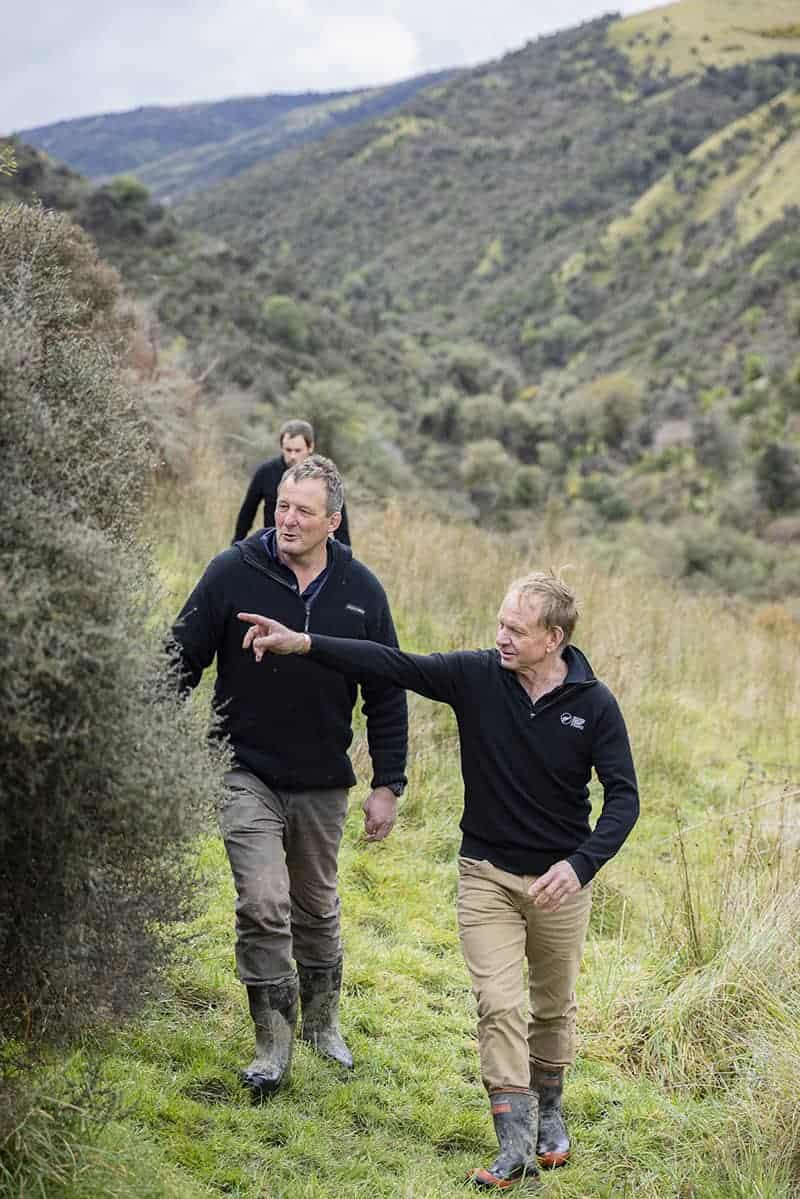
Taking care of the animals
The wild goats and pigs are the most common pests and they do great damage to the land and pose a threat to stock. For many years the team have worked tirelessly to reduce pest numbers, and they’re winning the fight.
“We’ve taken a huge number of goats and pigs off – a massive number of goats, about four and a half thousand overall, so that’s changed the landscape a lot,” says Jason. Dealing with feral pests requires constant manpower. They do an aerial shoot annually and Dan heads out on the farm two or three times a week for ground shoots.
The steep hills and deep gullies make for difficult pest management, but fortunately, there is an upside to the station’s hilly terrain where environmental sustainability opportunity thrives. Deep gullies are healthy hosts to established native forests, which the McDonalds have improved and connected to form corridors of carbon-sequestering forests.
The native bush and scrub in the gullies also provides shade and shelter for stock.
Retaining and nurturing the future growth of the native forests, including the planting work the team has done to extend the native forest corridors, is an important part of a broad spectrum of conservation and biodiversity-enhancing work.
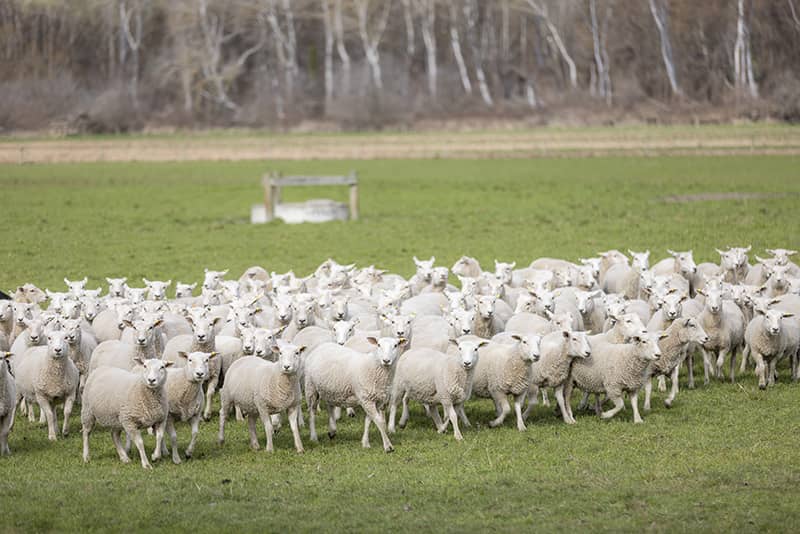
Artificial Intelligence
When it comes to planning and managing sustainability best practices, success begins with measurement and reporting. This is where technology tools can be a game changer. Whether analysing the land to determine carbon sequestration opportunities or developing a plan to manage climate risk resilience, Artificial Intelligence (AI) can work its algorithms to save time and provide accurate measurements and insights.
Ryan MacArthur, a Silver Fern Farms On-Farm Sustainability Manager, has worked with Tracey and Jason in conjunction with Lynker Analytics Ltd, a company developing satellite machine learning models that can identify woody vegetation species growing across the farm. This is done using satellite imagery, and training machines to identify, categorise and age different species of vegetation.
The sequestration occurring in these identified areas are then purchased from farmers, and used to net the full life cycle emission associated with the finished product, to zero. “Its a unique scheme,” adds Ryan, “in that we are actually purchasing the removals from within our own supply chain, from the farmers that supply the livestock.”
The farmers review the reports and then double- check the results to validate the AI-produced data. Using technology to gain immediate insights into the plant and vegetation species saves time and helps farmers understand the sequestration opportunities available on their property. “Utilising satellite imagery and machine learning allows us to map multiple properties, providing the scalability required to supply into our Net Carbon Zero product range. And it provides diversified income back to farmers, recognising the sequestration that’s occurring from areas that they can’t get recognised under other schemes. It incentivises them to reinvest that payment back into the farm, for environmental enhancement activities and additional planting. These guys are using all of that for pest control because they’ve got such a huge pest issue here,” says Ryan.
“Returning market-led incentives back to farmers is encouraging them to protect and enhance areas of native vegetative that may have once been viewed as unproductive areas of the property,” he explains.
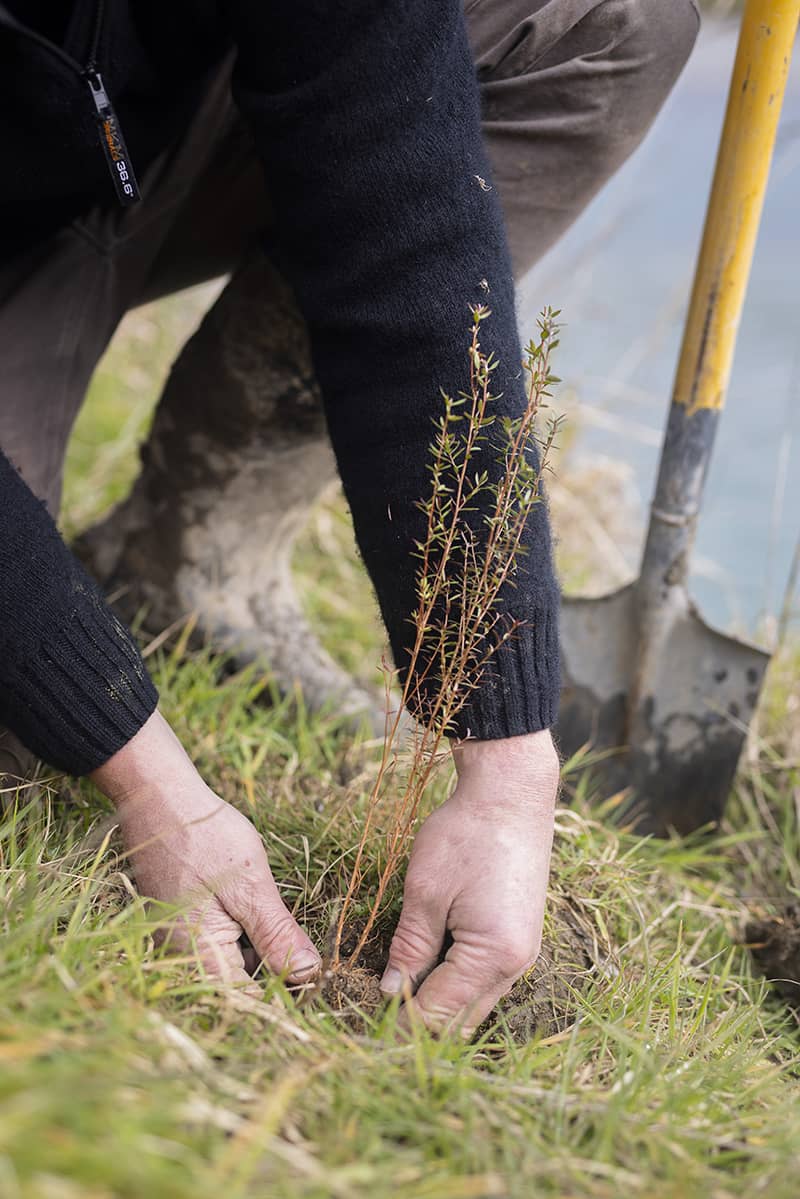
Net Carbon Zero by Nature
Deepening their level of commitment to sustainable farming practices in partnership with Silver Fern Farms, the McDonalds are supplying removals into the Net Carbon Zero by Nature programme, certified by Toitū Envirocare – a national agency that helps businesses measure, report, reduce and manage carbon emissions.
Cheddar Valley Station is part of a network of farms that produce the Silver Fern Farms Net Carbon Zero Beef and Lamb range. Jack Frizzell is a Silver Fern Farms Livestock Representative and trusted advisor who has worked with the family for 20 years and introduced them to the programme. The Net Carbon Zero range is transparent by design, displaying the carbon footprint calculation associated with the production of each piece of meat on the packaging. The Net Carbon Zero by Nature range guarantees that carbon emissions are balanced out by the actions of farmers, using carbon-insetting, as opposed to offsetting, and undertaking innovative and environmentally sustainable practices, on farm.
“It’s targeting discerning consumers who are conscious about the environmental footprint. It provides that feel-good factor of being able to eat a piece of red meat without the guilt of the emissions associated with it,” Jason says. “Its great Silver Fern Farms are purchasing the removals from us whereas most other net carbon zero products will buy offsets from other markets.”
The last couple of winters have brought extremely heavy rainfall resulting in damage to the already earthquake-damaged farm. Fractured land and water pipes caused by the 7.8 magnitude earthquake in Waiau, in 2016, have taken huge efforts to fix. The three residential properties on the farm also suffered damaged, with one property completely destroyed.
More recent slips caused by wet winter weather have kept Tracey extremely busy as she has worked hard to stabilise the land with poling and planting nurseries.
And in recent years, hot dry summers followed by autumnal drought conditions have meant the farmers have needed to find innovative solutions to figure out what to plant, and when, to produce adequate stock feed for the harsh conditions. “We had a three-year drought before the 2016 earthquake. And we had this deal with the kids that if we got an inch of rain, (I had to reduce it to 10 millimetres), we’d go out for fish and chips,” Jason says. “Archie was about four years old and he’d never seen green grass. We’ll come through spring, and you’ve got that bed in the ground. Then through summers it’s dry. And if then we get an autumn drought, you can’t bank anything up for winter. Autumn drought is really bad.
“So, we’ve planted raphanobrassica which is a summer crop that can take us through to winter. It’s a good utiliser of moisture and uses 40% less water than lucerne does to grow the same amount of dry matter. So, new crops like these make a massive difference,” says Jason. “Raphobrassica, lucerne and fodder beet are three things that help us mitigate drought.” Tracey adds.
A community growing as one
Sharing knowledge, as local farmers continue to innovate and find clever solutions to difficult issues, has been invaluable. “We’re involved with the Hurunui Landcare Group, and just about all the farms in the area are, too. The group has offshoots where they’ll be interested in learning about stream health, and another group might be interested in weeds and pests … It keeps the community growing as one,” Tracey says. The local farming community are open and inclusive and get together regularly to share knowledge, learn and support each other.
Sustainability programmes
Silver Fern Farms play a supportive role in helping farmers like the McDonalds in implementing the best sustainable practices as stewards of their land. As such, the farm has taken part in the New Zealand Farm Assurance Programme (NZFAP Plus) which is a voluntary programme, independently audited, that provides assurance to conscious consumers that the meat and wool produced is authentic, genuine and safe.
The NZFAP Plus audit also provides assurances regarding integrity, traceability, animal health and welfare, people, farm and natural resources and biosecurity.
In the short to medium term, the business is looking to continue to produce quality sheep genetics to other farms throughout New Zealand to improve the profitability and efficiency of the sheep industry, and to produce natural sought-after produce to industry markets. In the long term, the goal is to have a financial and environmentally sustainable business that is able to be successfully passed on to future generations.
From the source
Located on the east coast of New Zealand’s South Island, bordering Christchurch city, North Canterbury is primarily a farming district and is home to the 2,300-hectare sheep and beef farm, Cheddar Valley Station. The region’s grassy plains, clear lakes, snow-topped mountains, uncrowded beaches, lush pastures and rolling hills offer an enviable lifestyle. And for the visitor, the area offers activities like wine tasting, whale watching, horse riding, skiing, jet boating, bungee jumping, hiking and diving.
For more information, visit silverfernfarms.com
MiNDFOOD Promotion
Photography by Kristian Frires


